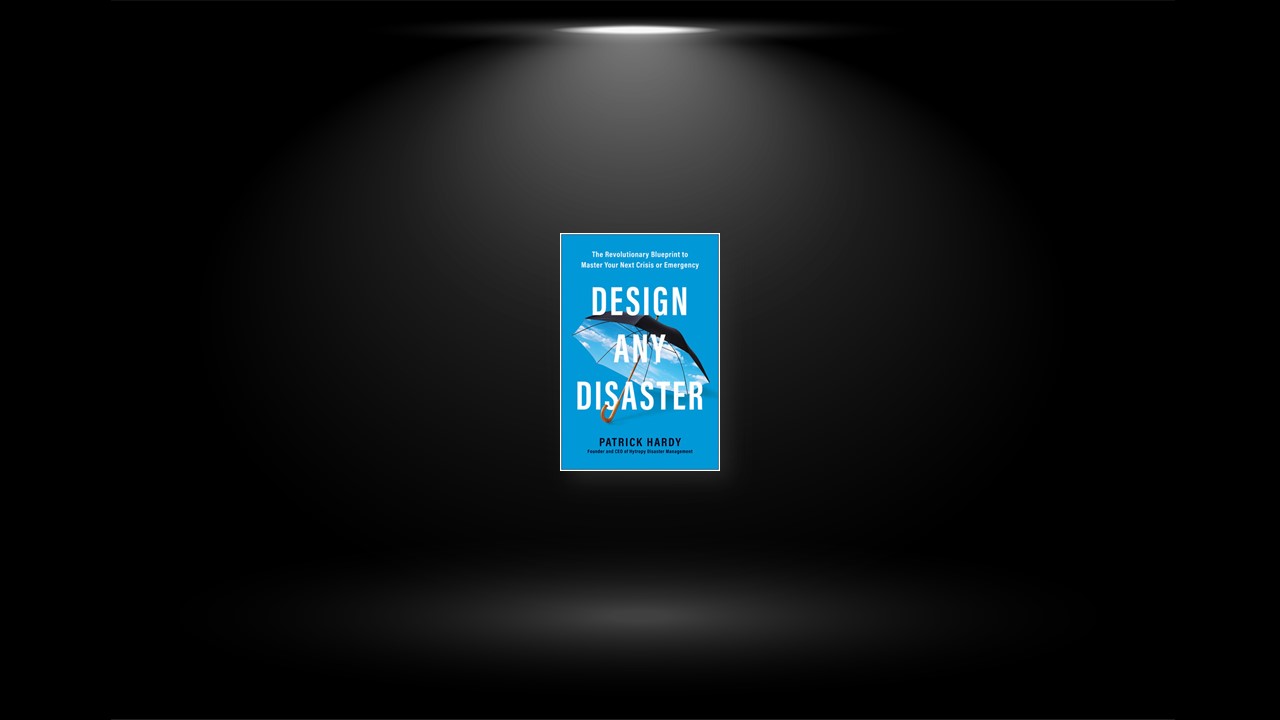How the C3 Method Can Design Any Disaster
Traditional disaster books will tell you what to buy and micromanage your disaster response, the author is not going to do that. If you want to know the first three things you must do in an earthquake, you got the wrong disaster book. Instead, the author wants to focus your thinking so that when you have to make important response decisions, you have the right approach to make them most effectively,
You don’t want you to fall into the Bystander Effect when dealing with disasters where you live because if you do, you won’t just be less prepared to handle the situation—you’ll permanently lose control of it.
So the author’s going to introduce you to the C3 Method. This method is one the author developed working with small businesses and families around the world. It’s powerful because it can be applied to all five points of the disaster cycle and gives you momentum to move to the next one. The three parts of the C3 Method are Command, Communicate, and Carry Out. Each is critical to reassert control over a given incident.
#1 COMMAND – “I CAN EMPOWER MYSELF”
Command is taking leadership over a disaster. Command is purely a mindset. When you take Command, you are hijacking your mindset from the poisonous passivity of the Bystander Effect that says, “If I do nothing, someone else will handle it” to a powerful mindset of “If I do nothing, no one else will, either.” This is a critical difference. Disaster after disaster has demonstrated that those who assert this active, self-empowered mindset are the ones who conquer any threat.
Recalibrate your thinking in a disaster: instead of assuming that someone else will handle it, in EVERY disaster, EVERY incident, EVERY emergency, no matter how big or small. Assume that if you do nothing, no one else will, either. If you only do one thing going forward, let it be to make every decision in a disaster based on this assumption alone—because this allows you to empower yourself.
So whether you are approaching the writing of a disaster plan, buying equipment, evacuating a flood, or recovering your life after a disaster, the first step is always taking Command by fundamentally changing your thinking. Most people don’t do this, which is why people make the same mistakes in countless disasters.
You’ll quickly notice the difference when Command is taken on a scene. Let’s pretend you were at Disneyland. Suddenly, you see a man who is unconscious on the ground. If you tell yourself that someone else will handle it, you will just watch or walk away, frozen in a state of inaction. Now, change your assumption: if you don’t do anything, no one is going to help him, which means he will likely die. See how a small change in mindset will completely alter your approach to an emergency? That’s the essence of taking Command.
Taking Command in a disaster can take many forms. It could be taking charge during a medical emergency or overseeing your family’s evacuation after a nuclear emergency at a local plant. The key is to use an empowering mindset to gain agency over the disaster. That doesn’t mean you have to be the sole leader in charge—you can also Command by delegating roles left and right to others. By Commanding, you can conquer any emergency or disaster you face, no matter how large.
The problem we see regarding Command within families, businesses, and organizations of all sizes is that no one wants to be the one to make a final decision in a disaster. This leads to the feeling of needing to endlessly collaborate. You must stop this. This is not disaster response by committee. One person has to be ultimately accountable. That doesn’t mean, however, that you shouldn’t take anyone else’s advice or counsel into consideration. In fact the author believes the advice of others is so critical that he has built it in directly as the second step to the C3 Method: Communicate.
#2 COMMUNICATE – “I CAN EMPOWER OTHERS”
Now that you have taken Command, you must Communicate. Communication might seem like a simple concept if I asked you for the dictionary definition. You’d do a quick search and say something like, “It’s the act or process of communicating; the imparting or interchange of thoughts, opinions, or information by speech, writing, or signs.”
We all have a kind of working definition for communication: relaying information from one person to another, whether it is written, verbal, or non-verbal. But in a disaster, communication is more than just giving assignments to people. There is a bigger use for it. The author wants to change your definition of communication. Here’s how he wants you to define it instead: it’s the act of organizing and leading a team during an emergency.
It doesn’t even matter if the members of your team know that they are on the team or not. For example, during a hurricane, the National Hurricane Center staff can be members of your team. That doesn’t mean you have to pick up the phone and speak to the director. But you can pull up the website and gather the storm information you’ll need to most effectively make decisions. By setting up a communication pipeline between yourself and the people who can help you, you then become a team. This process can be unidirectional or bidirectional.
When you Communicate effectively, you’ll stop relying on others and assuming that someone else will handle the disaster because you’ll be designing and assembling your own team of people without having to wait for someone to do it for you. This combats the Bystander Effect by decreasing your dependence, since you’ll be the one personally selecting people and organizations to help you.
Communication is without a doubt the weakest part of most disaster responses. The common image of disaster-response Communication put forward by movies and TV is one person yelling and barking orders at other people in a dictatorial fashion while everyone just blindly obeys. That’s not it.
Communication means establishing a clear pipeline between yourself and those you are providing information to, as well as between yourself and the people providing information to you. That’s what good teams do. It may seem simple, but you would be amazed at how many people Communicate ineffectively.
Commanding will significantly enhance your ability to Communicate effectively, which will then decrease your dependence, because it gives you the ability to gather the information you need to be effective. Once you have clarity around what needs to be done, your Communication will become much more effective—whether that’s gathering disaster plans, equipment, and supplies or determining the location of hazards within a community during an evacuation after a major natural disaster. And without an effective team, your response won’t be effective because, frankly, disasters can’t be handled alone.
Communication will in turn significantly enhance your ability to Command because it gives you the information you need and the information you must provide to others. In first-response work, we use Communication to empower our colleagues to perform distinct tasks within an emergency. In a car accident, for example, the firefighters will work to extract victims from shattered cars and put out fires resulting from damaged engines, while police officers will block traffic, provide support to medical responders, and evaluate if drugs or alcohol were involved, and emergency medical services (EMS) personnel will treat victims and put them in ambulances for rapid transport to a local hospital. Each one of us, through Communication with each other, will provide the necessary information for everyone to be more empowered as a team on scene and more effective in Carrying Out their roles, which is the last of the three steps in the C3 Method.
#3 CARRY OUT – “WE CAN EMPOWER EACH OTHER”
This one is easy: just do it. Get it done, whether that means going to the restaurant to get your own food or completing a complex rescue during a flood. In an emergency, it is important that you get things moving as soon as possible. Momentum is crucial throughout any disaster.
Once you have empowered your mindset and your team, every action you take needs to reinforce that empowerment. This means giving people manageable, simple tasks that utilize their strengths.
In a disaster, most people think they must try to do it all themselves. That’s not how Carrying Out works. You should work as a team while still maintaining responsibility for the disaster. Carrying Out means that I am going to remain accountable for the tasks that must get completed and will make sure they are done. If a task isn’t done, it will become my responsibility to complete it. With this mindset, when you encounter limitations, you won’t make assumptions about whether a task has been completed because you’ll know that you’ll be eventually responsible for completing it yourself. It’s crucial to recognize that if you don’t assign or complete a task, no one else will, either. The key is to get things done by creating discrete tasks for which you will remain accountable. This will guarantee that you’ll care and that you’ll maintain an active mindset because the situation will become your disaster. Lead people by example, collaboration, and proper planning, and they, too, will be empowered to care.
When you apply the C3 Method correctly, you will never face the Bystander Effect again in any disaster situation. Let’s say your community is struck by a major flash flood, which is fairly common in many areas. You notice that something is going on (a rush of dangerous water) and you interpret it as being an emergency (a danger to people and property), but then there comes the matter of responsibility. You may feel as though someone else is responsible for handling the flash flood and its effects. In part, you are right. The fire department and trained emergency crews will deal with the flood itself. But the flood’s effects on your life are totally within your own control (Command). Once you have established that, you must get your family and/or colleagues organized (Communicate) and then implement the actions you need to take (Carry Out). By effectively executing these steps of the C3 Method, you will never find yourself in a situation where events are controlling you.


